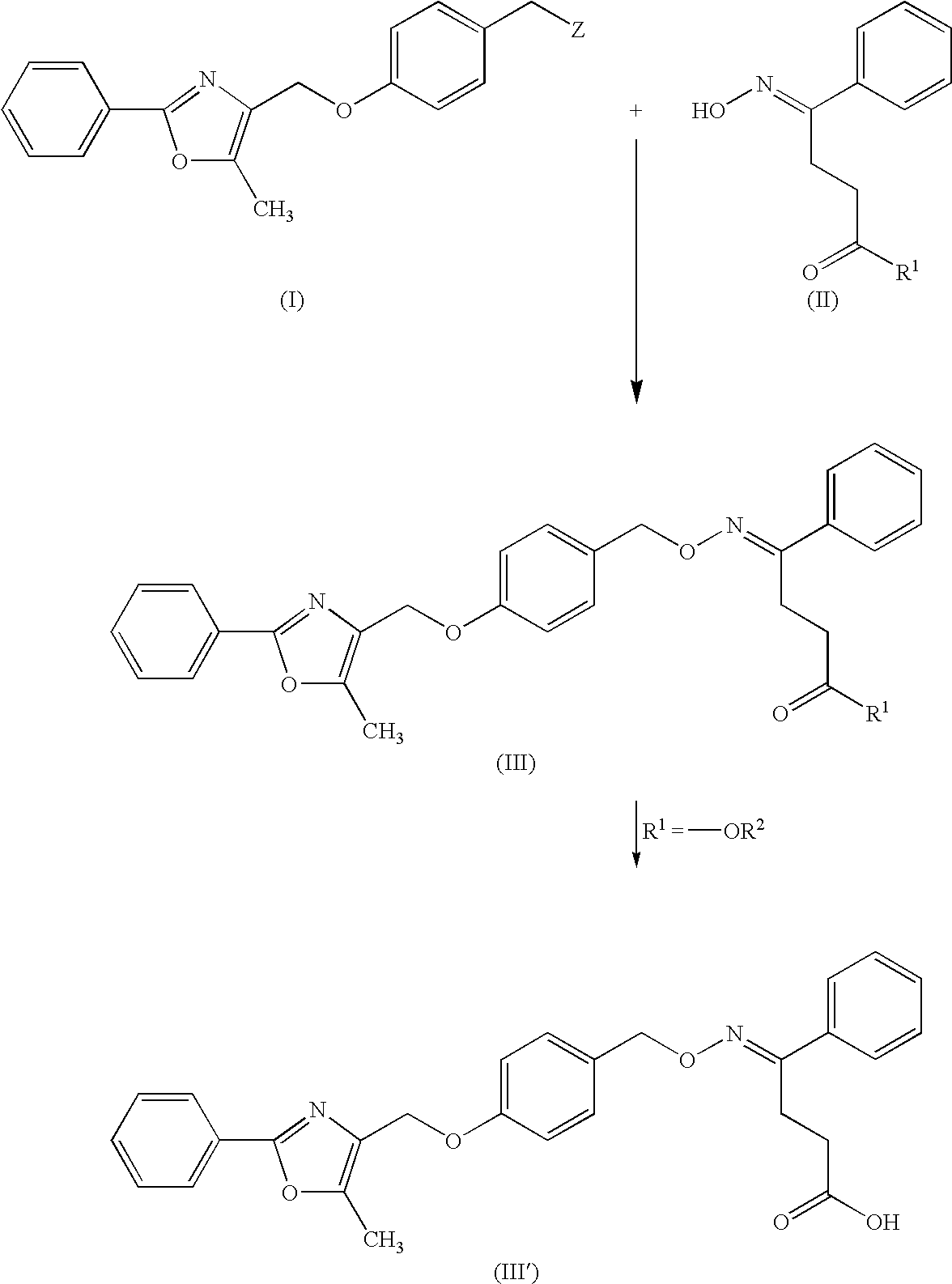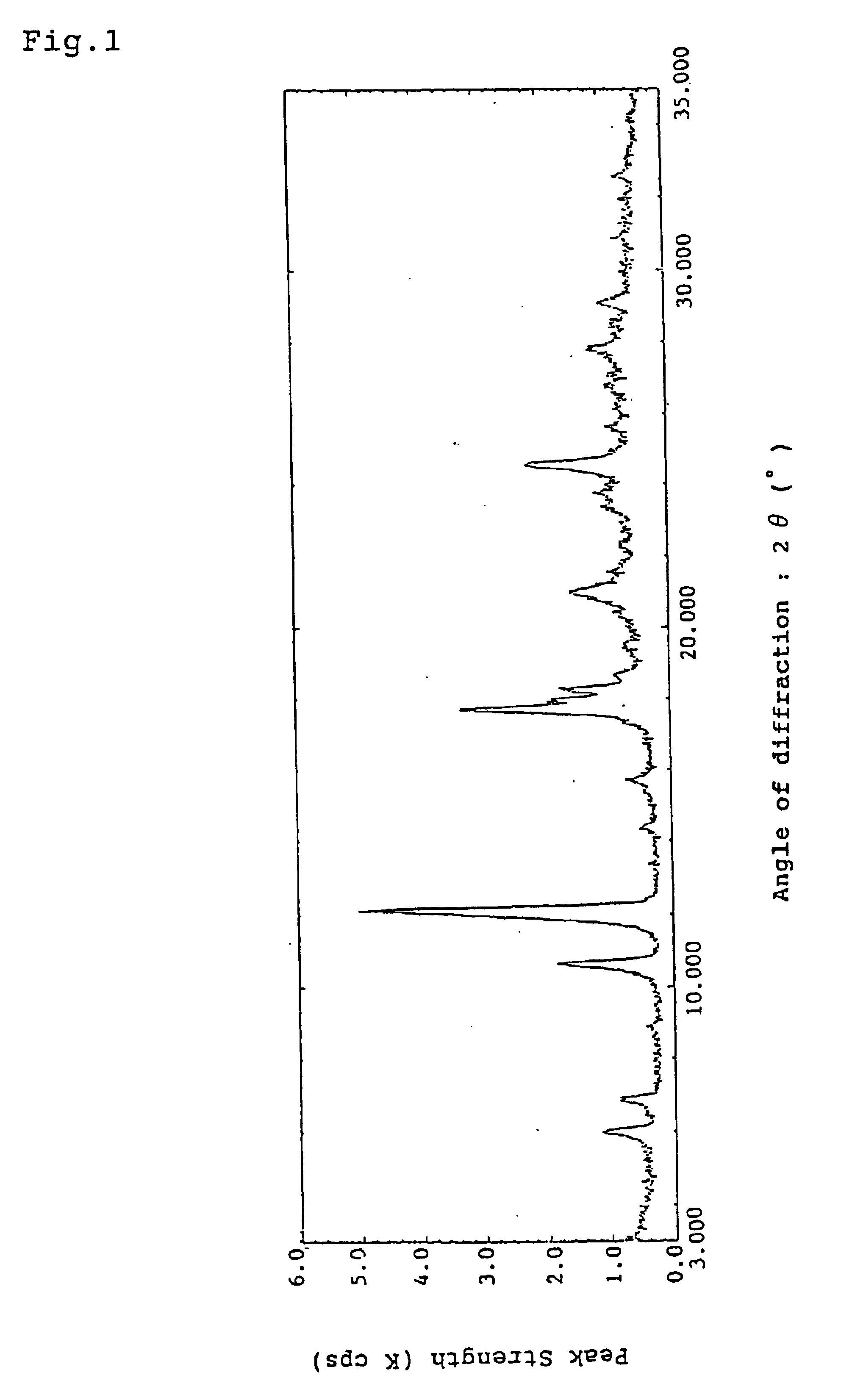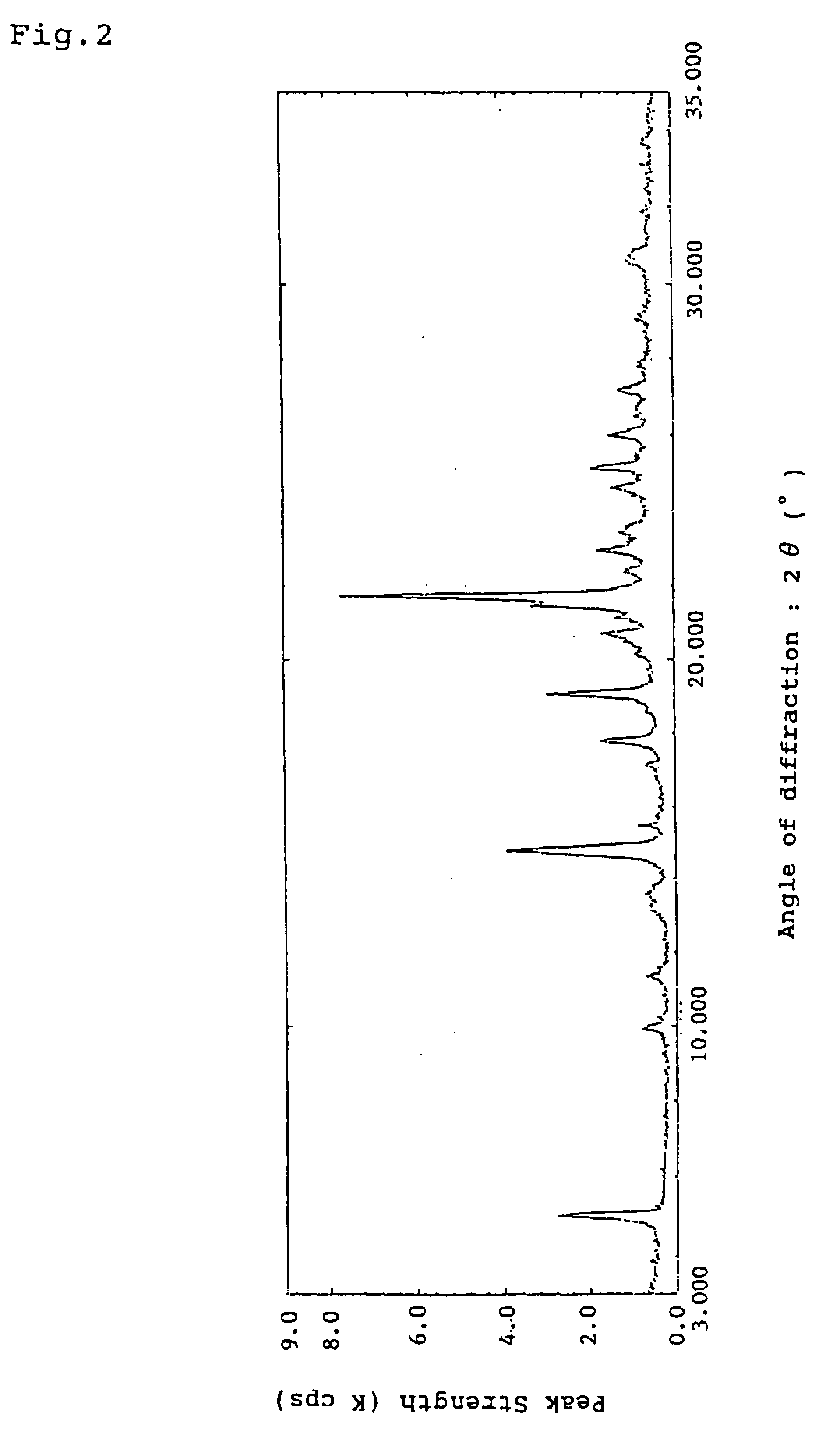Crystals of an oxyiminoalkanoic acid derivative and their use as antidiabetics
a technology of oxyiminoalkanoic acid and crystals, which is applied in the field of crystals of an oxyiminoalkanoic acid derivative and their use as antidiabetics, can solve the problem of inability to predict the structure of the compound, and achieve the effect of improving the stability and stability of the compound
- Summary
- Abstract
- Description
- Claims
- Application Information
AI Technical Summary
Benefits of technology
Problems solved by technology
Method used
Image
Examples
reference example 2
Thionyl chloride (1.85 ml) was added to a solution of 4-(5-methyl-2-phenyl-4-oxazolylmethoxy)benzylalcohol (5.00 g) in toluene (40 ml) and the mixture was stirred at room temperature for 30 minutes. Ice water was added to the reaction mixture followed by extraction with ethyl acetate. The ethyl acetate layer was washed with water, dried over MgSO.sub.4 and concentrated to give crystals (5.23 g; yield: 99%) of 4-(4-chloromethylphenoxymethyl)-5-methyl-2-phenyloxazole. Recrystallization from ethyl acetate-hexane gave colorless crystals. Melting point: 108-109.degree. C.
reference example 3
A mixture of methyl 3-benzoylpropionate (15.0 9), hydroxylamine hydrochloride (6.50 g), sodium acetate (9.60 g) and methanol (150 ml) was heated under reflux for 8 hours. The reaction mixture was concentrated, water was added to the residue and the mixture was extracted with ethyl acetate The ethyl acetate layer was washed with water, dried (over MgSO.sub.4) and concentrated. The residue was subjected to a silica gel column chromatography and, from an eluate with ethyl acetate-hexane (1:3, volume ratio), methyl (E)-4-hydroxyimino-4-phenylbutyrate (14.7 g; yield: 91%) was obtained as an oily product.
NMR (CDC1.sub.3) .delta.: 2.58-2.67 (2H, m), 3.09-3.17 (2H, m), 3.66 (3H, s), 7.35-7.44 (3H, m), 7.56-7.67 (2H, m), 8.00-8.80 (1H, br s).
reference example 4
Under a nitrogen atmosphere, sodium hydride (60%; oily; 127 mg) was added to a solution of methyl (E)-4-hydroxyimino-4-phenylbutyrate (661 mg) and 4-(4-chloromethylphenoxymethyl)-5-methyl-2-phenyloxazole (1.00 g) in N,N-dimethylformamide (10 ml) at room temperature and the mixture was stirred for 1 hour. After addition of 1N hydrochloric acid (5 ml), an aqueous solution of sodium bicarbonate was added thereto, followed by extraction with ethyl acetate. The ethyl acetate layer was washed with a saturated aqueous solution of sodium chloride, dried (over MgSO.sub.4) and concentrated. The residue was subjected to a silica gel column chromatography and an oily product was obtained from an eluate with ethyl acetate-hexane (1:3, volume ratio). This was dissolved in tetrahydrofuran (10 ml)-methanol (5 ml), a 1N aqueous solution of sodium hydroxide (5 ml) was added thereto and the mixture was stirred at room temperature for 1.5 hours. To the reaction solution was added 1N hydrochloric acid (...
PUM
 Login to View More
Login to View More Abstract
Description
Claims
Application Information
 Login to View More
Login to View More - R&D
- Intellectual Property
- Life Sciences
- Materials
- Tech Scout
- Unparalleled Data Quality
- Higher Quality Content
- 60% Fewer Hallucinations
Browse by: Latest US Patents, China's latest patents, Technical Efficacy Thesaurus, Application Domain, Technology Topic, Popular Technical Reports.
© 2025 PatSnap. All rights reserved.Legal|Privacy policy|Modern Slavery Act Transparency Statement|Sitemap|About US| Contact US: help@patsnap.com



